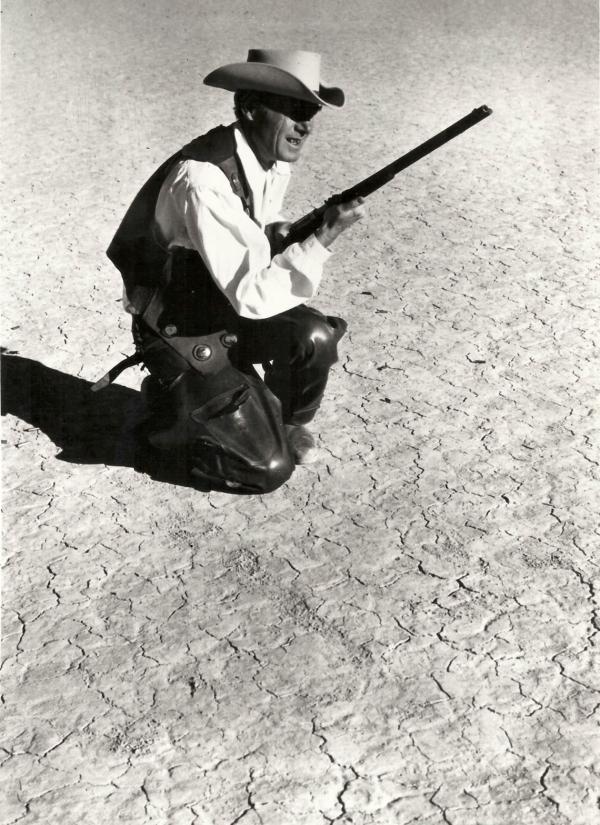On Saturday, October 22, a free film screening at LACMA pairs two experimental films from the 1960s that stage a rich meditation on the seemingly muted environments of the desert and the ocean.
A centerpiece of structural film, Michael Snow’s Wavelength (1967), is comprised of a 45-minute zoom that erratically advances across his Manhattan loft. During the film, a few people come and go in the loft—one pair moving a set of bookshelves into the room, an individual collapsing on the floor, another briefly turning on a radio to The Beatles’ “Strawberry Fields Forever”—all as Snow places various color gels over the lens, changes out different film stocks, and introduces an electronic buzz that gradually increases in frequency for the duration of the film. While Wavelength may be taken as a work about mundane urban experience or even about the nature of the cinema, its subject—the telos of its zoom—is actually a still photograph of the ocean. The waves pictured in this image offer one kind of “wavelength” to consider, with others being more literally present in the space of the theater in the form of the light and sound emitted from the projector.
These waves also provide a point of contact with Walter De Maria’s Hard Core (1969), another version of structural film whose soundtrack is a separate audio piece by the artist, titled Ocean Music, that consists of field recordings of the Atlantic and Pacific Oceans and drumming. Directly pairing ocean and desert, De Maria’s film is organized around the technique of panning the landscape of Nevada’s Black Rock Desert in full circles. Between these pans, Hard Core shows a protracted wild-west shootout between two cowboys (one of whom is played by the artist Michael Heizer), an allegory of American conquest and violence staged in the context of the Vietnam War. Famously taciturn about his own work, De Maria once quipped that “the desert is the most aesthetic place in the world, outside of the ocean, maybe more than the ocean, and when you're in the middle of the Sahara Desert you know that it’s one of the most beautiful places in the world, that’s all. There's no question. You don't have to explain it; it’s just obvious.”
Wavelength and Hard Core offer an opportunity to think not only about the presentation of such “aesthetic” environments in cinema, but also to broad issues of media, politics, and genre in experimental American art of the late 1960s. Seeing both films together is also a rare opportunity—Wavelength because Snow has stipulated that it only be viewed on 16mm film and Hard Core because it is a limited-edition art film with restricted circulation.
Join us for the screening, and stay for a lively conversation moderated by LACMA’s Jennifer King. Jane McFadden of ArtCenter College of Design and I will be chatting about De Maria’s practice, among other topics.



